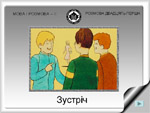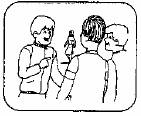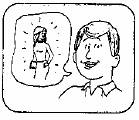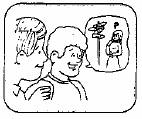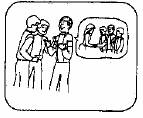
In the courses e-mova: Core Ukrainian 10 and 20, you became accustomed to the pattern of viewing, listening and repeating Powerpoint dialogues for each Unit. You learned the importance of practising what you heard many times so that you became comfortable with speech patterns in Ukrainian. This pattern will be continued in e-mova: Core Ukrainian 30. By the end of this course, you will be able to participate in conversations with speakers of Ukrainian on topics which are familiar to you.

|
Step 1: View the PowerPoint (PPT) Slide presentation for Dialogue
21 – Зустріч. Click here to link to the presentation online or use the CD-ROM provided in your course package.
|
|
 |
Step 2: View and listen to the dialogue again, this time repeat what you hear after each audio clip on your computer. Pay attention to the stresses on words and the intonation patterns. |
| |
 |
Step 3: Check your progress by repeating the process above. Use the Text (T) button if you'd like to see the Ukrainian audio clip. |
| Tips: |
Use the Cumulative Dialogue Box (P) if you are having difficulty remembering the entire dialogue. Use the Course Dictionary at the end of the lesson to find the meaning of some of the new terms. |
|
Test your recall skills by completing the review Exercises below. Check back to the PPT presentation only if absolutely necessary!
XXІ. Exercise 1.i
Діялог 21 – Покажи, що ти знаєш порядок діялогу.
_____ Чудова нагода познайомитися!
_____ Виглядає вона дуже гарно!
_____ Спитаймо чи можна їй допомогти.
_____ Дивіться, хлопці! Якась нова дівчина йде!
_____ Вона, мабуть, не знає куди йти!
After you have completed the exercise, check your answers by reviewing the PPT Presentation. Repeat the dialogue as many times as necessary until you can easily remember the flow of conversation.
XXI. Exercise 1.ii
Place the illustrations below in the proper sequence by writing their appropriate number in the space provided. Then write the matching statement underneath each slide. Use handwriting please.
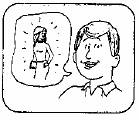 |
#____ |
_______________________________________________________________
|
|
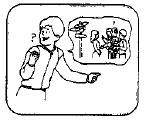 |
#____ |
_______________________________________________________________
|
|
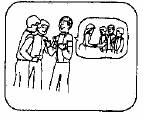 |
#____ |
_______________________________________________________________
|
|
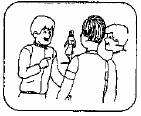 |
#____ |
_______________________________________________________________
|
|
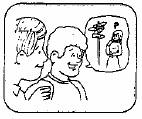 |
#____ |
_______________________________________________________________
|
|
XXI. Exercise 1.iii
Dialogue 21 introduces the idea of helping someone who is new to your school or community. Complete the exercise presented below to reinforce vocabulary used when introducing yourself to someone new. Read each scene out loud together with your instructor.
1. нова дівчина у школі
Василь: Добрий день! Вітаємо до нашої школи! Мене звати Василь.
Нова дівчина: ________________________________________________
Василь: Ти маєш дуже гарне українське ім’я. Приємно познайомитися!
2. новий хлопець у школі
Олена: Привіт! Вітаємо до нашої школи! Я називаюся Олена Козак.
Новий хлопець: ________________________________________________
Олена: Ти маєш чудове ім’я! Приємно познайомитися з тобою.
3. новий вчитель у школі
Тарас: Добридень! Вітаємо вас* до нашої школи! Мене звати Тарас а тут мій приятель Руслан.
Новий вчитель: _________________________________________________
Тарас: Мені дуже приємно познайомитися з вами*!
Руслан: Мені також! Чи можна вам допомогти?
Новий вчитель: _________________________________________________
*Do you recall why the boys are addressing the new teacher in the second person plural ‘ви’?
 |
Reflect on your language progress
Which words in this Dialogue are giving you difficulty? Highlight these words and other new words as they are presented in this Unit, so that you can focus on their meaning. |
 |
Work on Cultural Enrichment ‘A’
You may begin working on Cultural Enrichment Segment A – Level 3, which is a continuation of Українські танці та регіони України. If you have any questions, please contact your instructor.
|
|



